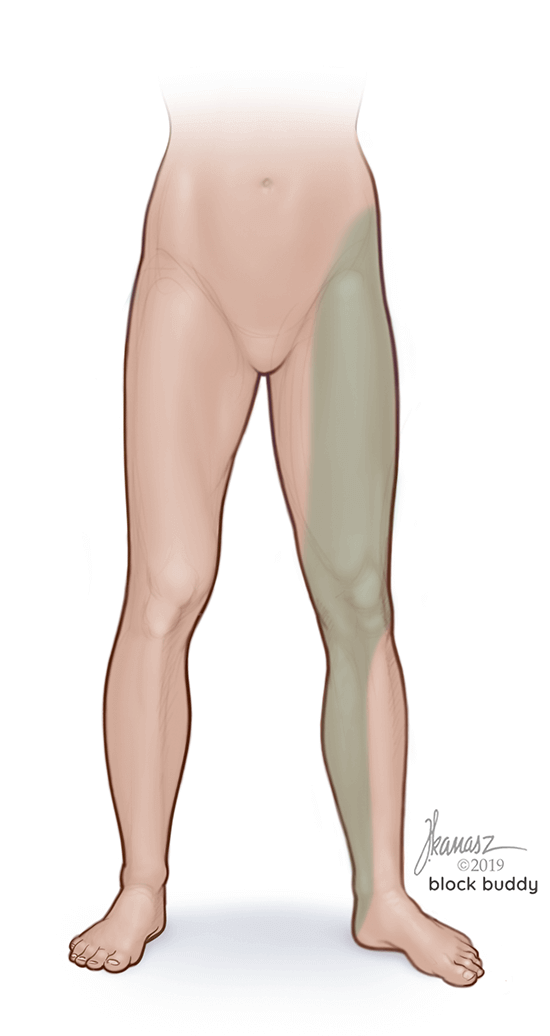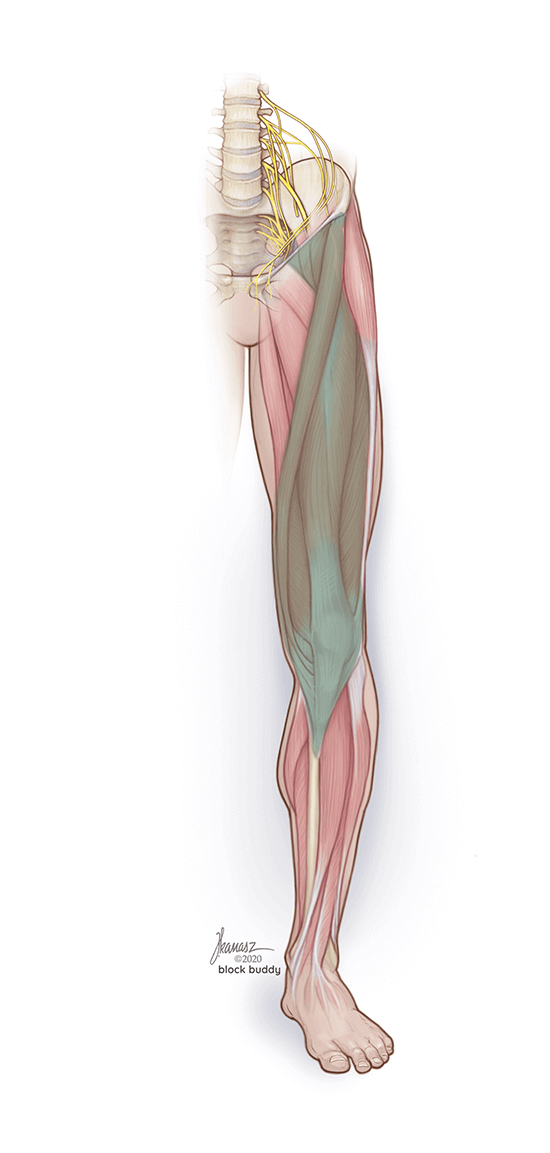Fascia Iliaca Block



The Fascia Iliaca Block provides anesthesia to the hip, anterolateral thigh, anterior knee, and medial aspect of the lower leg, ankle, and foot. It is commonly used to provide analgesia for:
- Hip fractures
- Hip arthroscopy
- Total hip replacement
Overview of the Fascia Iliaca Block
The fascia iliaca block targets the lateral femoral cutaneous, femoral, and obturator nerves. Studies have shown that performing a fascia iliaca block can decrease postoperative pain, total opioid consumption, and side effects that commonly occur with opioid administration. In addition, patients may also experience earlier ambulation after surgery compared to neuraxial anesthesia.
Risks and Side Effects
Any procedure that involves regional anesthesia comes with its own set of risks. Some risks and complications may include:
- Local anesthetic systemic toxicity (LAST)
- Infection
- Nerve injury
- Hematoma
- Intraperitoneal penetration
- Lower extremity weakness due to femoral nerve blockade.
How to Perform a Fascia Iliaca Block
Place the patient in a supine position and place the ultrasound transducer in the parasagittal plane over the anterior superior iliac spine (ASIS). Then, slide the transducer in a medial direction over the inguinal ligament to identify the bowtie appearance formed by inferior border of the internal oblique muscle and the superior border of the sartorius muscle. Lying deep to the muscles are the fascia iliaca and iliacus muscle. Next, insert the block needle through the skin and advance in-plane using a caudad to cephalad direction until the needle tip passes through the fascia iliaca. After negative aspiration, administer 40-60ml of local anesthetic. The iliacus muscle should hydrodissect away from the fascia iliaca.
There are more details you will need to know to properly perform this block. Use the Block Buddy Pro app for a more comprehensive review of this nerve block.
Get Complete Instructions in the Block Buddy Pro App
Block Buddy Pro is the ultimate resource to help anesthesia providers administer ultrasound-guided nerve blocks. Specifically, the Fascia Iliaca Block Lesson in the Block Buddy Pro app includes:
- Simple instructions that are easy to follow and understand.
- 18 images consisting of detailed illustrations, ultrasound images, and photos from inside the operating room.
- A narrated video with step-by-step instructions.
- An equipment list, CPT codes, and more!
You will also enjoy many other detailed lessons in Block Buddy Pro, each with its own step-by-step instructions, images, and videos. You can even add important notes directly in the app, and have access anytime, anywhere with offline mode. Block Buddy Pro is available on all devices (mobile, tablet and desktop) and can be purchased in the App Store and Google Play Store. Create your account now to get started!
